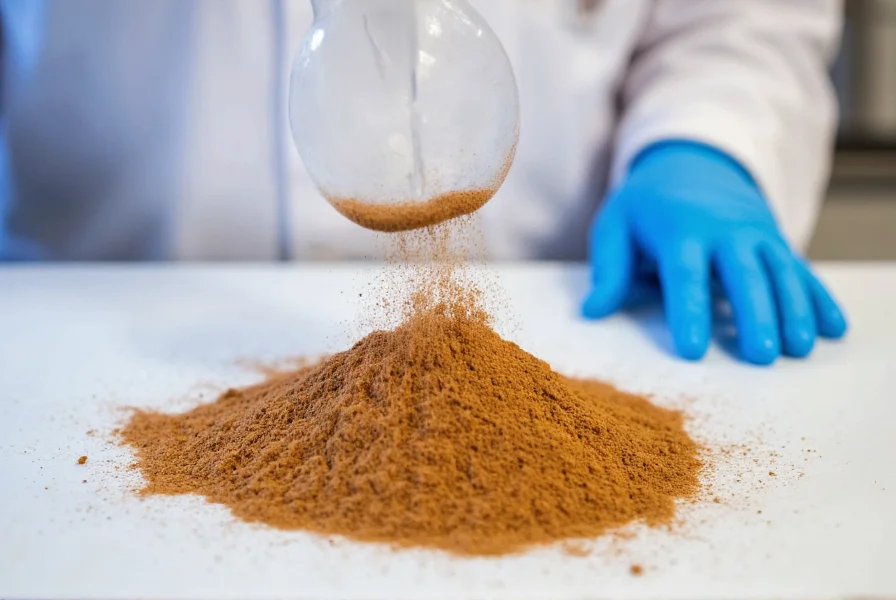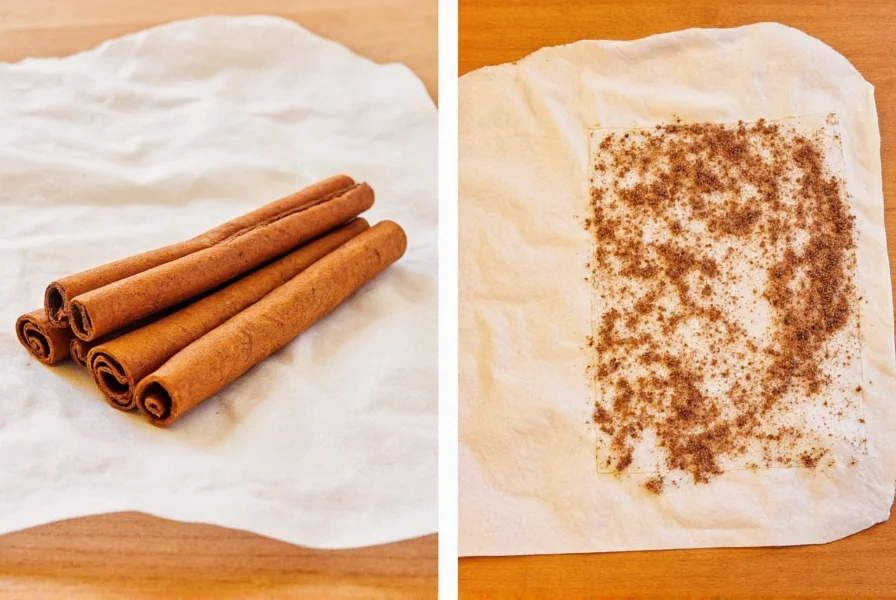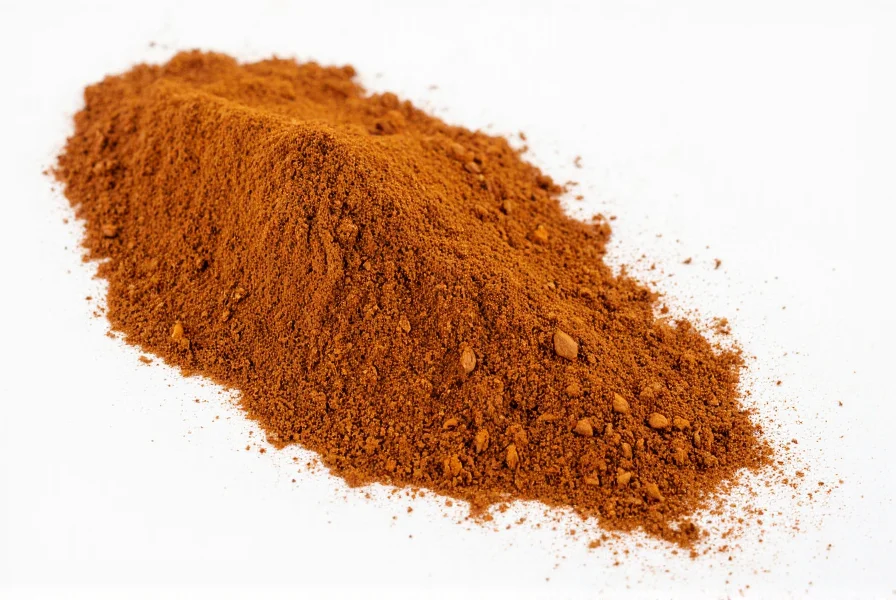Recent concerns about lead in ground cinnamon have sparked questions among health-conscious consumers and parents. While pure cinnamon doesn't naturally contain lead, contamination can occur during harvesting, processing, or packaging. Understanding the actual risks and how to protect yourself requires examining the scientific evidence and regulatory standards.
Understanding Lead Contamination in Cinnamon Products
In early 2024, the U.S. Food and Drug Administration (FDA) issued warnings about elevated lead levels in certain cinnamon-based products, particularly those marketed as apple cinnamon snacks for children. Testing revealed that some products contained lead concentrations significantly exceeding safety thresholds. The concern isn't with cinnamon itself as a plant, but with potential contamination during the supply chain.
Lead contamination in spices like ground cinnamon typically occurs through:
- Soil absorption in areas with historical lead contamination
- Contact with lead-containing materials during processing
- Use of contaminated water in production facilities
- Cross-contamination from equipment or storage containers
Regulatory Standards for Lead in Food Products
The FDA has established guidance levels for lead in various food categories. For foods frequently consumed by young children, the recommended maximum is 0.1 parts per million (ppm). However, testing of certain cinnamon products revealed levels as high as 2.09 ppm - more than 20 times the recommended limit for children's foods.
| Food Category | FDA Guidance Level (ppm) | Reported Levels in Cinnamon Products |
|---|---|---|
| Foods for infants/toddlers | 0.1 | Up to 2.09 |
| General food products | 0.5 | Up to 1.5 |
| Spices (proposed) | 0.5 | Varies by product |
The discrepancy between regulatory guidance and actual test results highlights why consumers should be vigilant about their cinnamon sources, especially when purchasing products for children.

Health Implications of Lead Exposure from Cinnamon
Lead exposure, even at low levels, poses significant health risks, particularly for children under six years old whose developing brains and nervous systems are most vulnerable. Chronic exposure to elevated lead levels can result in:
- Reduced cognitive function and IQ
- Behavioral problems and attention deficits
- Slowed growth and development
- Impaired hearing and speech
For adults, regular consumption of lead-contaminated cinnamon may contribute to cardiovascular issues, kidney damage, and reproductive problems over time. The risk depends on both the concentration of lead and frequency of consumption.
How to Identify Safe Cinnamon Products
Consumers can take several practical steps to minimize exposure to lead in ground cinnamon:
- Check for recalls - Regularly monitor FDA and CDC announcements about contaminated products
- Choose reputable brands - Select companies that publish third-party heavy metal testing results
- Look for organic certification - While not a guarantee, organic producers often have stricter quality controls
- Buy whole cinnamon sticks - Ground cinnamon has more surface area for potential contamination
- Vary your spice sources - Don't rely on a single supplier for all your cinnamon needs
When purchasing ground cinnamon lead testing results should be readily available from the manufacturer. Reputable suppliers conduct regular heavy metal screening as part of their quality assurance process.

What Regulatory Agencies Are Doing About Cinnamon Lead Levels
Following the discovery of elevated lead levels in certain cinnamon products, the FDA has increased monitoring and testing of imported spices. The agency has implemented:
- Enhanced screening at ports of entry for cinnamon shipments
- Targeted testing of products marketed to children
- Collaboration with foreign governments to improve quality controls
- Development of stricter guidance levels for lead in spices
While these measures are promising, consumers shouldn't assume all products on the market meet safety standards. Independent verification remains important when selecting ground cinnamon products for regular use.
Practical Recommendations for Consumers
Based on current understanding of ground cinnamon lead concerns, here are evidence-based recommendations:
- For children: Avoid apple-cinnamon flavored snacks until you've verified their safety
- For cooking: Use whole cinnamon sticks when possible, grinding them fresh as needed
- For supplements: Choose cinnamon products with published heavy metal testing
- For baking: Rotate between different cinnamon suppliers to minimize exposure risk
- For storage: Keep ground cinnamon in airtight containers away from potential contaminants
Remember that occasional consumption of cinnamon with slightly elevated lead levels poses minimal risk for adults. The primary concern involves regular, long-term exposure, particularly for developing children.
Looking Forward: Improving Spice Safety Standards
The recent concerns about lead in ground cinnamon have prompted discussions about strengthening global spice safety standards. Industry experts recommend:
- Implementing mandatory heavy metal testing for all imported spices
- Establishing traceability systems throughout the spice supply chain
- Developing soil remediation programs in cinnamon-growing regions
- Creating consumer-facing labeling that indicates heavy metal testing
As these measures develop, consumers can expect greater transparency about the safety of ground cinnamon products. Until then, staying informed about recalls and choosing products from companies with rigorous quality control remains the best protection against lead contamination in spices.
Does all ground cinnamon contain lead?
No, pure cinnamon does not naturally contain lead. However, contamination can occur during harvesting, processing, or packaging. Recent testing has found elevated lead levels in some cinnamon products, particularly certain apple-cinnamon snacks marketed to children, but not in all cinnamon products.
How can I tell if my ground cinnamon has lead contamination?
Without laboratory testing, you cannot determine lead levels in your cinnamon. The best approach is to purchase from reputable suppliers who provide third-party heavy metal testing results, check for product recalls, and consider buying whole cinnamon sticks instead of pre-ground powder, as sticks have less surface area for potential contamination.
What is the safe level of lead in cinnamon products?
The FDA recommends a maximum of 0.1 parts per million (ppm) of lead in foods frequently consumed by infants and toddlers. For general food products, the guidance level is 0.5 ppm. Some contaminated cinnamon products have tested as high as 2.09 ppm, which is more than 20 times the recommended limit for children's foods.
Are organic cinnamon products safer from lead contamination?
Organic certification doesn't guarantee absence of lead, as contamination can occur from environmental sources. However, organic producers often implement stricter quality control measures and may be more likely to conduct heavy metal testing. Always look for specific heavy metal testing results regardless of organic status when concerned about ground cinnamon lead levels.
How does lead get into ground cinnamon products?
Lead can enter the cinnamon supply chain through several pathways: absorption from contaminated soil in growing regions, contact with lead-containing materials during processing, use of contaminated water in production facilities, or cross-contamination from equipment or storage containers. The grinding process increases surface area, potentially exposing more of the spice to contaminants.











 浙公网安备
33010002000092号
浙公网安备
33010002000092号 浙B2-20120091-4
浙B2-20120091-4